1. Slow Loris: The Cuddly Assassin
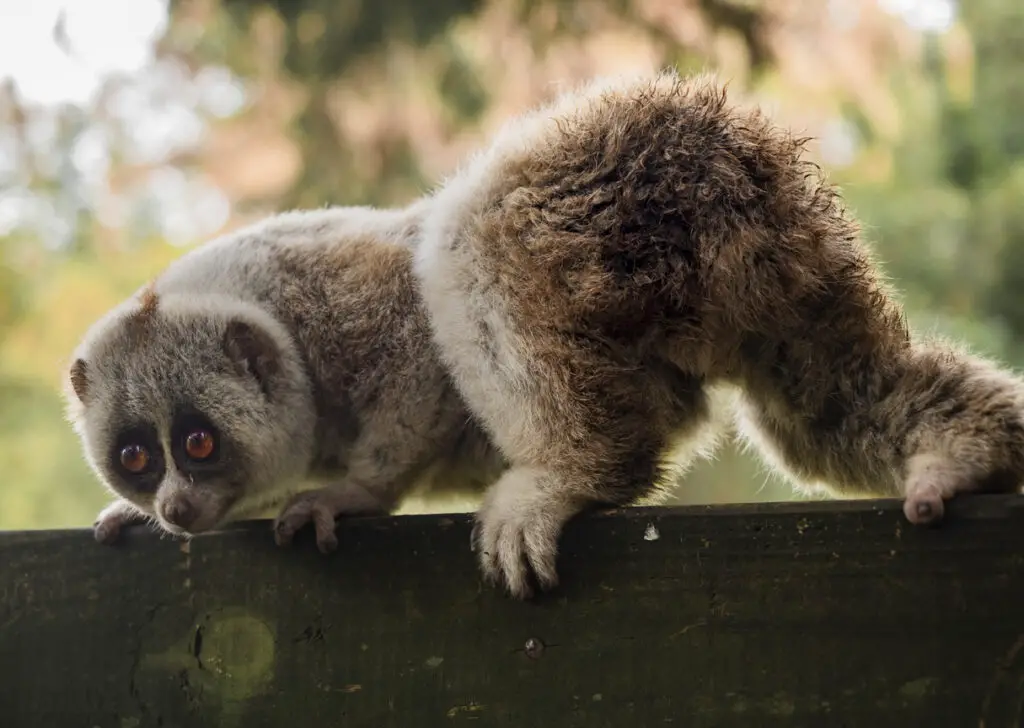
Don’t let those big, soulful eyes fool you – the slow loris is nature’s adorable little psychopath. This fuzzy primate looks like it should be starring in cute animal videos, but it’s actually the world’s only venomous mammal. Imagine a teddy bear that could send you into anaphylactic shock – that’s the slow loris for you! These pint-sized ninjas produce their venom by mixing secretions from a gland under their arms with saliva. It’s like nature’s own twisted bartending class, resulting in a toxin that can cause anaphylactic shock in humans. Their slow movements aren’t just for show – it’s a stealth mode that allows them to sneak up on unsuspecting prey.
National Geographic reveals that slow lorises have a bite force stronger than any comparably sized primate. They’re also nocturnal and arboreal, with huge eyes for night vision. Ironically, these toxic terrors are immune to many venomous snake bites. It’s as if evolution said, “Let’s make the cutest animal also the deadliest.” And just to add to their quirky arsenal, they can hang upside down from branches for hours, thanks to special blood vessels in their hands and feet. So the next time you see a slow loris video online, remember: that cute face hides a potent chemical weapon and a set of teeth that could make a vampire jealous!
2. Blue-Ringed Octopus: The Deadly Disco Ball
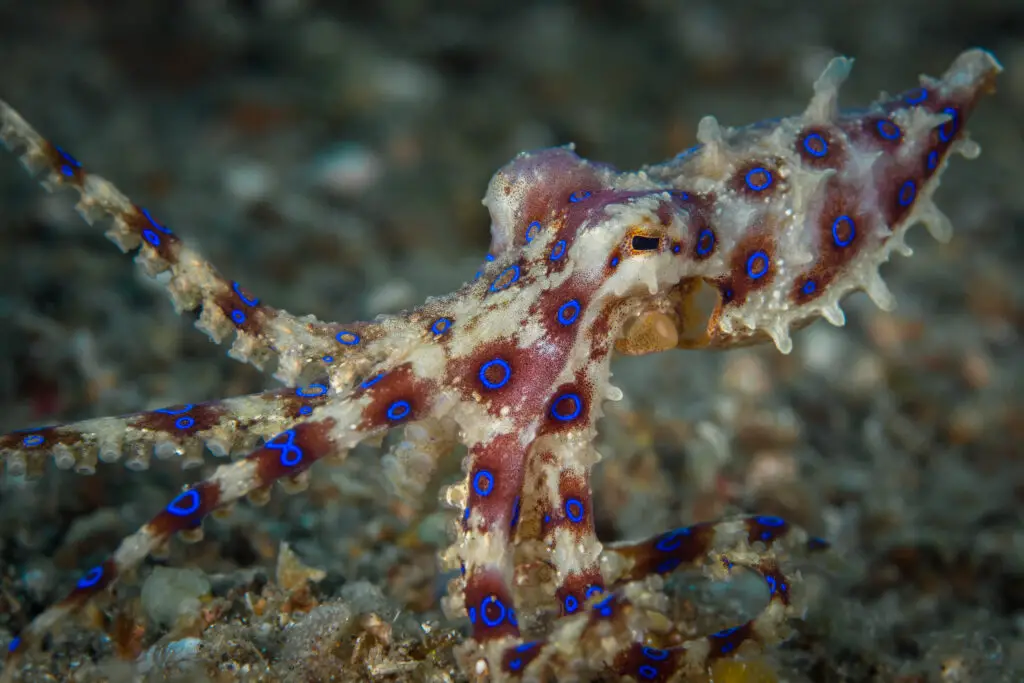
If the ocean threw a rave, the blue-ringed octopus would be the star attraction. This tiny cephalopod is nature’s own light show, flashing brilliant blue rings when it’s angry or frightened. But don’t be fooled by its size or dazzling display – this little disco ball of doom packs a punch that would make Mike Tyson jealous. Its venom contains tetrodotoxin, 1,200 times more potent than cyanide. Despite being only the size of a golf ball, one blue-ringed octopus carries enough venom to kill 26 adults in minutes. These mini assassins are masters of disguise, able to change both color and texture to blend in with their surroundings.
The Ocean Conservancy warns that these pint-sized predators can change color in less than a second, flashing their blue rings as a warning. Their bites are often painless, leading to paralysis and respiratory failure within 30 minutes if untreated. Amazingly, they’re immune to their own venom, thanks to a unique protein in their blood. Despite their deadly nature, blue-ringed octopuses are surprisingly short-lived, with a lifespan of only about two years. So the next time you’re tempted to pick up a cute little octopus at the beach, remember: if it’s wearing blue rings, it’s not accessorizing – it’s advertising its deadly disco moves!
3. Platypus: Nature’s Frankenstein with a Venomous Twist
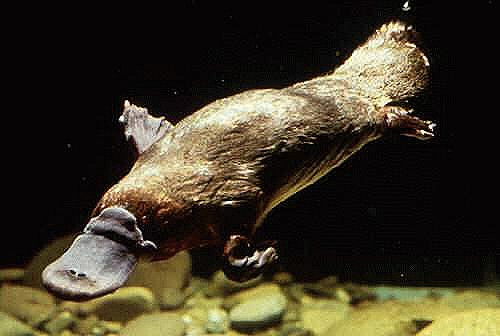
Oh, platypus, you adorable little freak of nature! With your duck bill, beaver tail, and otter feet, you look like you were assembled from spare animal parts after a wild night at the evolutionary bar. But don’t let its wacky appearance fool you – male platypuses have venomous spurs on their hind legs. While not lethal to humans, a platypus sting can cause pain so excruciating it doesn’t respond to morphine. These odd creatures are one of only two mammals that lay eggs, adding another layer to their bizarre nature. It’s like nature decided to create its own version of Mr. Potato Head, but with a venomous twist.
According to research in the Australian Mammalogy journal, platypus venom contains a unique cocktail of peptides found nowhere else in nature. These egg-laying mammals also have 10 sex chromosomes (humans have 2) and can detect electrical impulses from their prey. It’s as if evolution threw everything at the wall to see what would stick, and in the case of the platypus, everything did! To top it all off, they don’t have stomachs – their esophagus connects directly to their intestines. So the next time you see a platypus and think “Aww, how cute!”, remember: this is nature’s way of saying “Look, don’t touch!” Unless you fancy a dose of excruciating pain with your animal encounter.
4. Pufferfish: The Deadly Delicacy
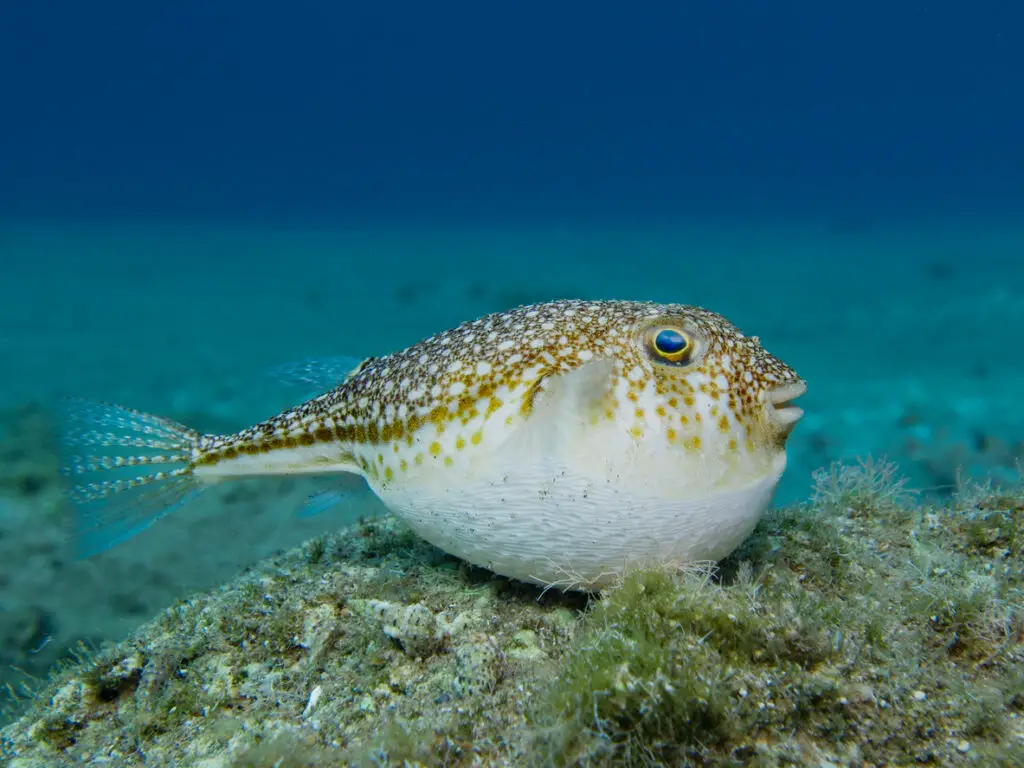
Don’t let their cute, balloon-like appearance fool you! Pufferfish are packing some serious poison. These aquatic oddballs contain a neurotoxin called tetrodotoxin that’s 1,200 times more potent than cyanide. Talk about a fish that really doesn’t want to be eaten! Their unique ability to inflate into a spiky ball is a last-ditch defense mechanism, making them too large for most predators to swallow. It’s like nature’s version of a deadly beach ball.
The FDA warns that one pufferfish has enough toxin to kill 30 adults. Yet in Japan, they’re considered a delicacy called fugu. Chefs train for years to prepare this fish safely. Here’s a wild fact: some dolphins have been observed using pufferfish to get “high,” gently chewing on them and passing them around like some kind of underwater joint. Despite their deadly reputation, pufferfish are quite intelligent and can even recognize individual human faces! It’s like having a super smart, poisonous pet that could kill you with one bad bite. Talk about a risky dinner date!
5. Hippopotamus: The Chunky River Psychopath
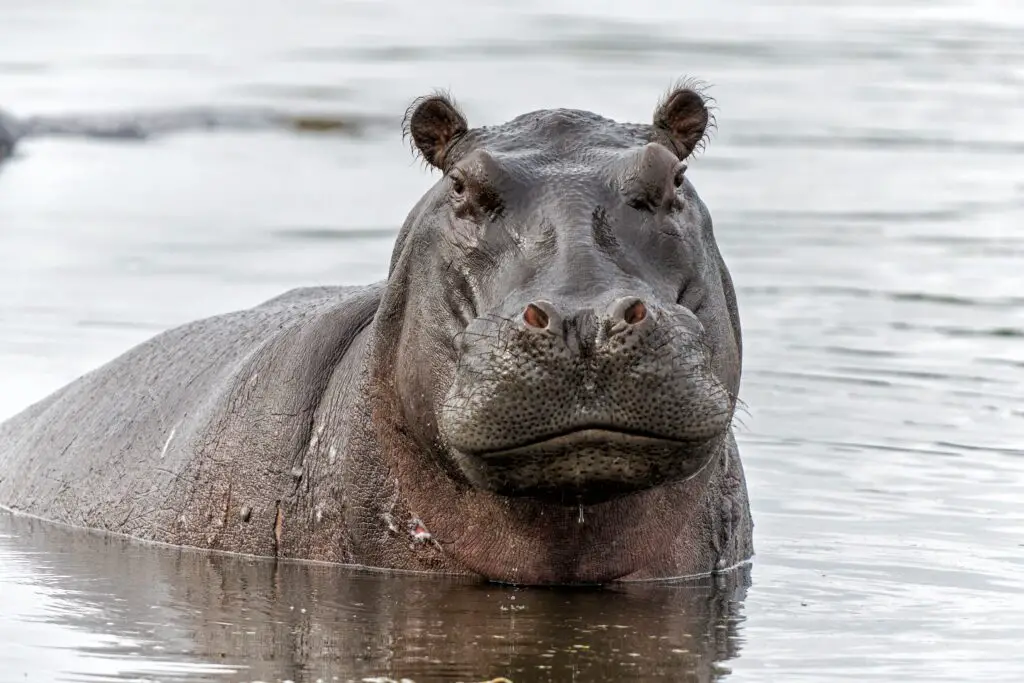
These chunky river horses might look like oversized teddy bears, but don’t be fooled! Hippos are responsible for about 500 human deaths in Africa each year. They can run faster than humans on land and are surprisingly agile in water. It’s like nature decided to create a tank and give it anger management issues. Despite their massive size, hippos can’t actually swim – they push off from the river bottom or float. Imagine a multi-ton ballerina doing deadly pirouettes in the river.
The BBC reports that hippos have some bizarre habits. Males mark their territory by spinning their tails while defecating, spraying poop up to 30 feet! They also secrete a red, oily substance that acts as sunscreen and antiseptic, leading to the myth that they “sweat blood.” Talk about a messy and misunderstood animal! Their massive yawns aren’t signs of sleepiness, but rather aggressive displays showing off their formidable tusks. So if you see a hippo yawning, it’s not an invitation for a nap – it’s a warning to back off or become river chow!
6. Leopard Seal: The Playful Predator

With their puppy-dog eyes and sleek bodies, leopard seals might seem friendly. But don’t be deceived! These Antarctic predators are one of the most fearsome hunters in polar regions. They’ve been known to stalk humans in the water, probably mistaking them for oversized, clumsy penguins. Their powerful jaws can open up to 160 degrees, allowing them to catch prey as large as other seals. It’s like a water-bound version of Little Red Riding Hood, but with more blubber and sharper teeth.
National Geographic explorer Paul Nicklen had a bizarre encounter where a leopard seal kept trying to feed him penguins. It’s both terrifying and oddly endearing – like being offered a sandwich by Hannibal Lecter. These seals can grow up to 11.5 feet long and weigh up to 1,300 pounds. That’s one big “puppy” you don’t want to pet! Leopard seals are also known for their eerie, otherworldly vocalizations that can be heard above and below water. Imagine a mix between a lion’s roar and a whale’s song, and you’re halfway to understanding the haunting melody of these aquatic predators.
7. Poison Dart Frog: Nature’s Toxic Skittles
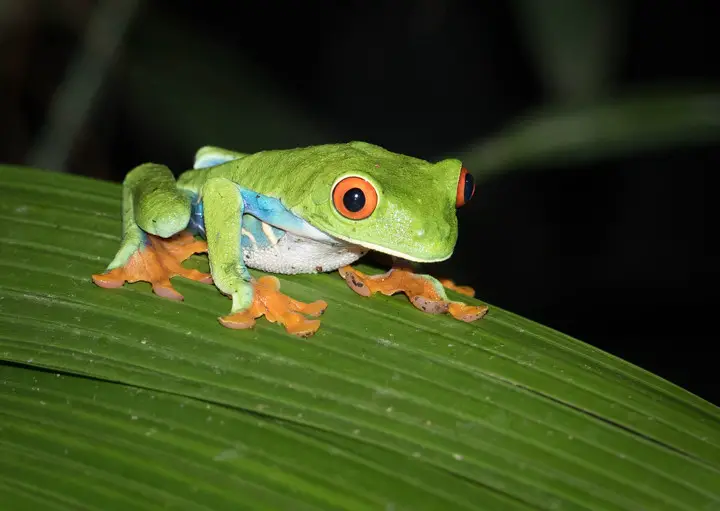
These tiny frogs look like they’ve been dipped in neon paint, but their bright colors are actually a warning. The golden poison frog packs enough toxin to kill 10 adult humans or 20,000 mice. It’s like nature decided to create a real-life version of Angry Birds, but with more toxins and less pig-smashing. Despite their deadly nature, some species of poison dart frogs are excellent parents, with males guarding eggs and females feeding tadpoles with unfertilized eggs. Talk about a toxic family dynamic!
National Geographic reveals an interesting twist: frogs raised in captivity aren’t toxic. Their poison comes from their diet in the wild. Indigenous people in Colombia use the frogs’ toxins to poison their blow darts for hunting, hence the name. Nature’s way of saying “eat local” taken to a deadly extreme! Amazingly, these tiny terrors have been observed engaging in “frog wrestling” matches to establish dominance. Picture a WWE match, but with contestants that could kill you with a single touch. Now that’s what I call extreme sports!
8. Box Jellyfish: The Invisible Assassin
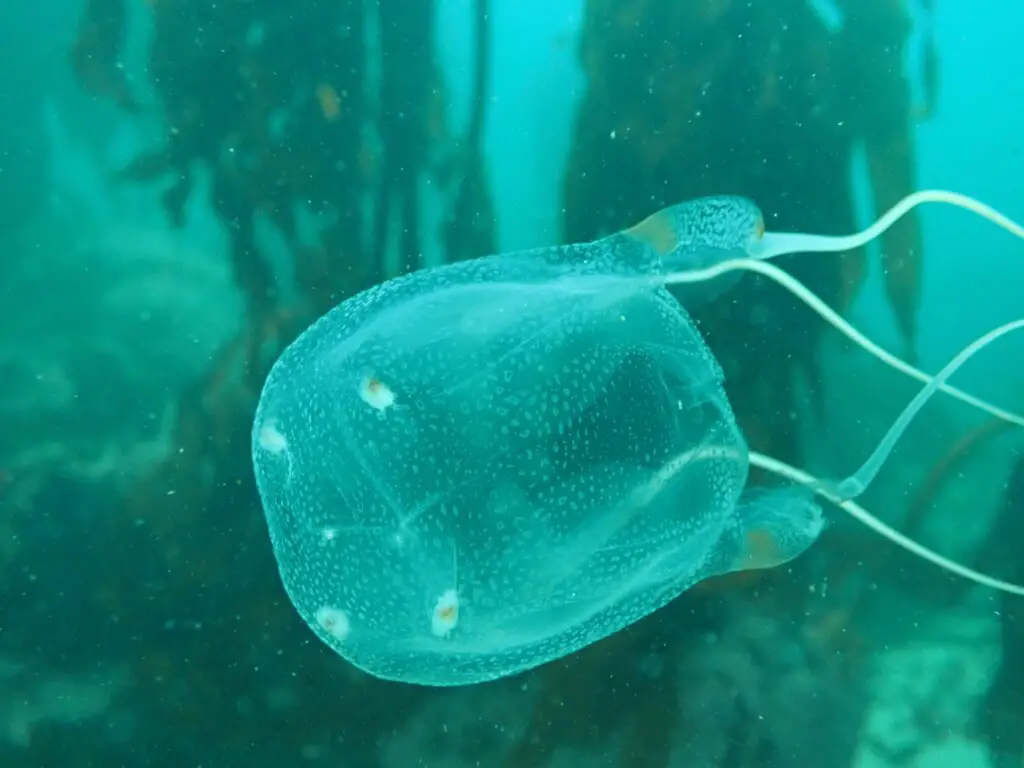
Imagine swimming in crystal clear water when suddenly – bam! – you’re hit with venom so potent it can cause cardiac arrest in minutes. Welcome to the world of the box jellyfish. These transparent terrors are like the ninjas of the sea, almost invisible and incredibly deadly. They can swim at speeds up to 4.6 mph, making them one of the fastest jellyfish species. It’s like nature created a floating, venomous ninja that can take you out before you even know it’s there.
The National Oceanic and Atmospheric Administration (NOAA) warns that box jellies have 24 eyes and can actively hunt their prey. Their tentacles are covered in tiny, venom-filled darts called nematocysts. Australia, where these jellies are common, has vinegar stations on beaches to neutralize stings. Because nothing says “fun in the sun” like the constant threat of invisible, floating death, right? Surprisingly, box jellyfish are also known to exhibit complex mating behaviors, including courtship dances. Imagine a deadly ballet performed by transparent dancers – beautiful, but you definitely don’t want a front-row seat!
9. Cone Snail: The Deadly Shell Game
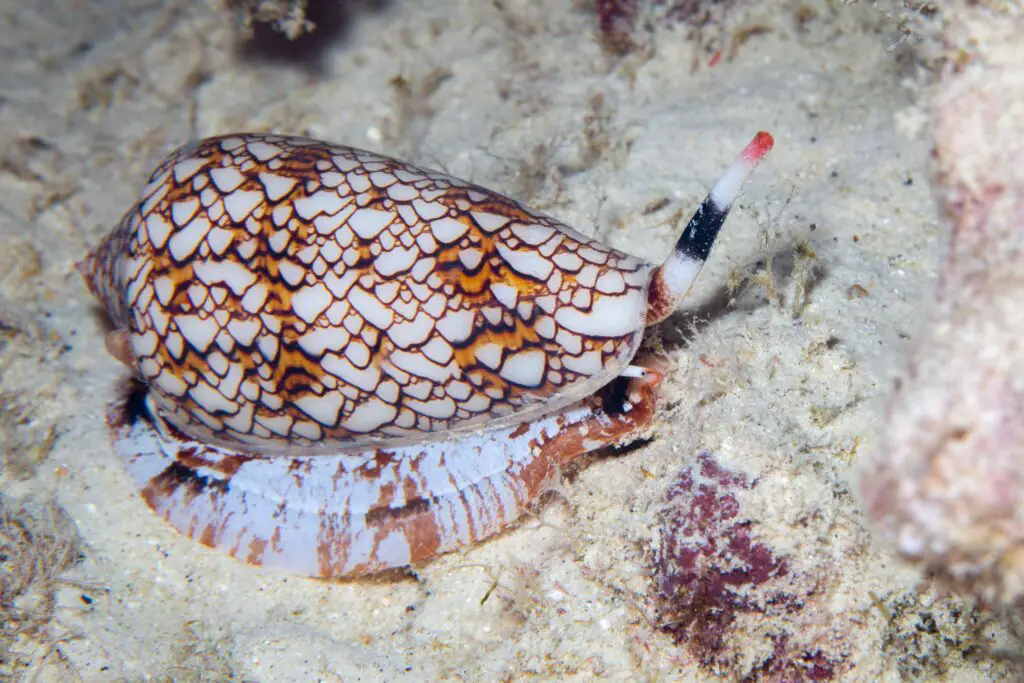
Beautiful shells hiding a deadly secret – that’s the cone snail for you. These unassuming killers pack a venom-loaded harpoon that can penetrate wetsuits and gloves. There’s no antidote, and a single sting can kill an adult human in hours. Shell collecting suddenly seems less appealing, doesn’t it? The cone snail’s harpoon-like tooth can strike with the force of a mantis shrimp, delivering venom faster than the blink of an eye. It’s like a tiny underwater Cupid, but instead of making you fall in love, it makes you fall… dead.
Marine biologists at the University of Queensland have dubbed the most dangerous species “the cigarette snail” because after it stings you, you only have time to smoke a cigarette before you die. Talk about a last puff! Ironically, scientists are studying cone snail venom to develop new painkillers. It’s like Mother Nature’s way of saying, “Sorry about the deadly venom, here’s a consolation prize!” Some cone snail species can even change their venom composition based on whether they’re hunting or defending themselves. Imagine having a different flavor of deadly cocktail for every occasion – these snails are the bartenders from hell!
10. Cassowary: The Dinosaur That Time Forgot
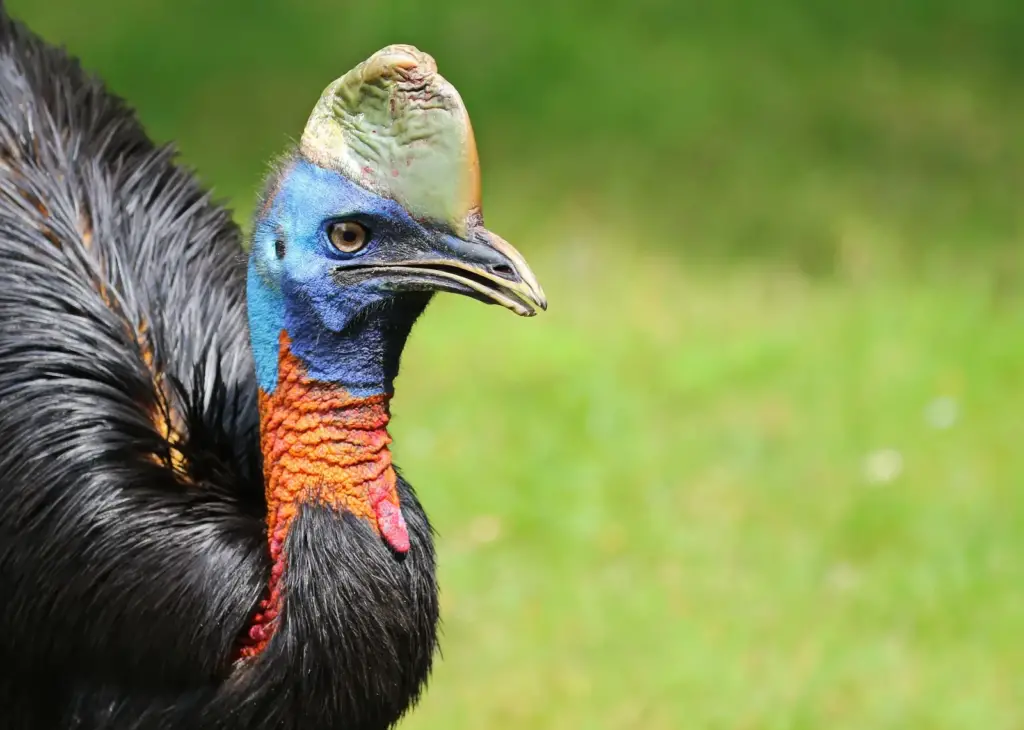
This colorful bird looks like what you’d get if you asked a five-year-old to draw a turkey after a Jurassic Park marathon. But don’t let its goofy appearance fool you – the cassowary is often called the world’s most dangerous bird. With powerful legs and dagger-like claws, it can disembowel a human with a single kick. Their bright blue necks and red wattles make them look like they’re permanently dressed for a prehistoric disco. It’s like Mother Nature decided to see what would happen if she gave a dinosaur a makeover and anger management issues.
The San Diego Zoo reports that cassowaries can stand up to 6.6 feet tall and weigh up to 130 pounds. During World War II, American and Australian troops were warned to stay away from these feathered menaces. Despite their fearsome reputation, cassowaries play a crucial role in rainforest ecosystems as seed dispersers, with some plants relying entirely on them for propagation. So they’re like the mail carriers of the forest, delivering packages and death threats with equal efficiency. Just remember, if you ever encounter one, the only appropriate reaction is to cassowar-run away!
11. Hooded Pitohui: The Toxic Tweety Bird
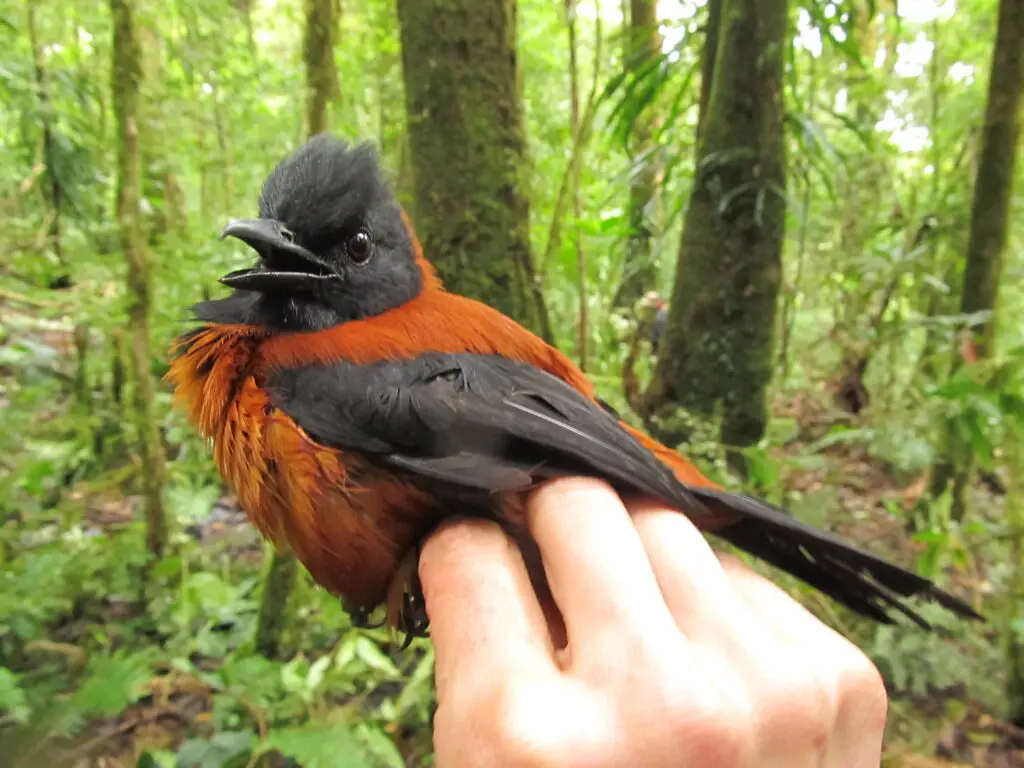
This innocent-looking songbird is one of the few known poisonous birds in the world. Its feathers and skin contain a powerful neurotoxin. Local tribes in New Guinea avoid using its feathers in headdresses. A literal example of “don’t ruffle my feathers”! The pitohui’s toxic defense is so effective that even lice and mites avoid these birds. It’s like they’ve got a permanent “Do Not Disturb” sign hanging around their necks.
The Audubon Society reports that the pitohui’s toxin is the same found in Colombia’s poison dart frogs. It gets its poison from the choresine beetles it eats. Talk about “you are what you eat”! And get this – they’re one of the few birds known to actually stink. Locals describe their odor as rotten meat. So not only will touching it hurt you, but it’ll offend your nose too! Interestingly, the pitohui’s toxicity levels can vary depending on its habitat and diet, making some individuals more dangerous than others. It’s like a toxic lottery – you never know if you’re getting the mild version or the extra-strength formula!
12. Dingo: The Wild Card of the Canine World
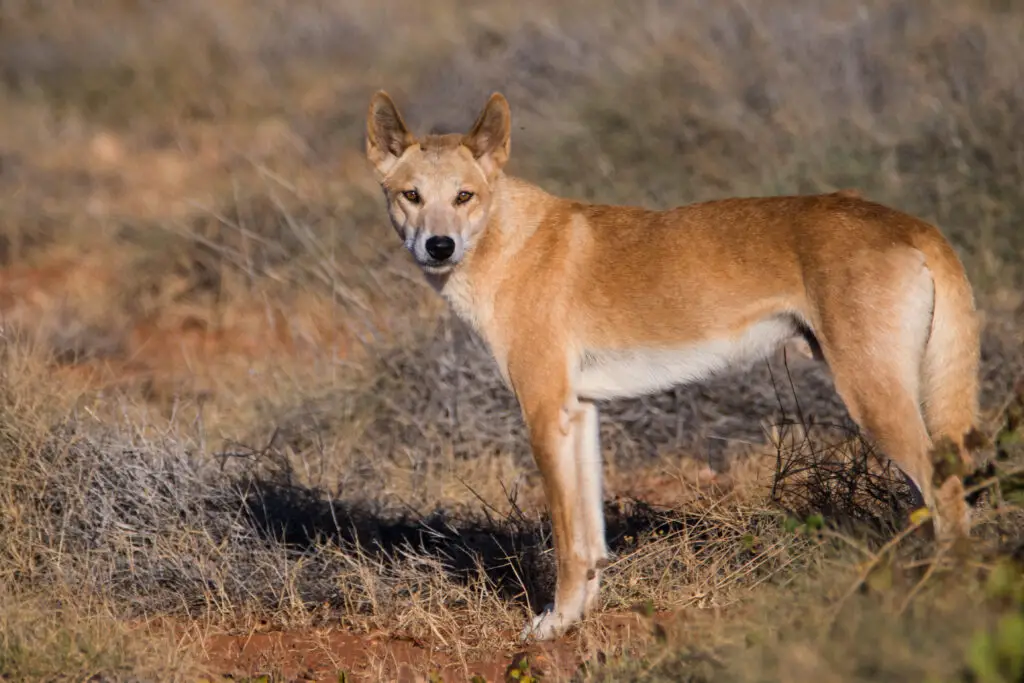
These wild dogs might look like your average canine, but they’re no Lassie. While attacks on adults are rare, dingoes have been known to attack children and pets. They’re skilled hunters and play a crucial role in Australia’s ecosystem. Just don’t expect them to fetch your newspaper! Dingoes have such flexible necks that they can rotate their heads almost 180 degrees, giving them an owl-like ability to survey their surroundings. It’s like nature decided to create a dog-owl hybrid, just to keep things interesting.
The Australian Dingo Foundation warns that these dogs are more “Call of the Wild” than “Lassie Come Home.” They can run at speeds up to 35 mph, jump 6.5 feet high, and even climb trees! Dingoes don’t bark like domestic dogs – they howl. It’s like they’re constantly auditioning for a wolf tribute band. Despite their wild nature, dingoes are highly intelligent and have been observed using tools, such as pushing rocks together to create stepping stones across water. So they’re not just pretty faces with sharp teeth – they’re the MacGyvers of the canine world!
13. Mute Swan: The Feathered Fury

These elegant birds are a symbol of love and grace, but they’ve got a nasty temper. During nesting season, they become extremely territorial and have been known to attack kayakers, swimmers, and even small aircraft. So much for a peaceful day at the lake! Swans are so strong that they’ve been known to capsize small boats when defending their territory. It’s like they’re auditioning for a role in “The Birds 2: The Swan’s Revenge.”
The Royal Society for the Protection of Birds (RSPB) warns that swans can deliver a nasty bite and their wings are strong enough to break a human’s arm. Despite their name, they’re not actually mute – they grunt, snort, and hiss when agitated. Swans are also one of the few birds that can fly at high altitudes, with some recorded flying at heights of up to 8,000 feet! So not only do you have to watch out for them on the water, but they can also dive-bomb you from above. It’s like dealing with a beautiful, feathery missile with anger issues.
14. Koala: The Not-So-Cuddly Eucalyptus Addict

Cuddly? Yes. Harmless? Not quite. Koalas have incredibly sharp claws and powerful arms. When threatened, they can cause serious injury. Plus, many koalas carry chlamydia, which can be transmitted to humans. Maybe admire these eucalyptus munchers from afar? Koalas have unique fingerprints, just like humans, making them the only non-primate known to possess this trait. It’s like nature decided to create a CSI: Eucalyptus Forest edition.
The Australian Koala Foundation reveals that koalas sleep up to 20 hours a day due to their low-energy eucalyptus diet. They have unique fingerprints, just like humans. Surprisingly, their brains are quite small relative to their body size. It’s less like hugging a teddy bear and more like wrestling a furry cactus with an STD. Despite their name, which means “no drink” in some Aboriginal languages, koalas do drink water, especially during heatwaves or when their eucalyptus leaves don’t provide enough moisture. So they’re basically nature’s version of a sleepy, grumpy teenager with a very specific diet and occasional need for hydration. Just don’t try to wake them up – you might regret it!
15. Dolphins: Flipper’s Evil Cousins

Flipper might have been friendly, but wild dolphins can be dangerous. They’re known to ram boats, and there have been instances of dolphins attacking humans. Their powerful tails can deliver a blow equivalent to 1,200 pounds of force, and their sharp teeth are designed for ripping apart fish – or anything else that gets in their way. Dolphins can produce a focused beam of sound strong enough to stun or kill prey, essentially giving them a natural sonic weapon. It’s like they’re auditioning for an underwater version of “Fight Club.”
Marine biologists at the Dolphin Research Center have observed that some male dolphins form gangs to fight other dolphins or to coerce females. They’re incredibly smart, with brain-to-body ratios second only to humans. Some have even been seen using pufferfish toxins to get “high.” It’s like an underwater frat party gone wild! Dolphins also have the longest memory of any non-human species, with some able to recognize the whistles of former pod mates after being separated for more than 20 years. So the next time you see a pod of dolphins frolicking in the waves, remember: these aren’t just playful sea puppies – they’re the bad boys of the ocean with a memory that would put an elephant to shame!


